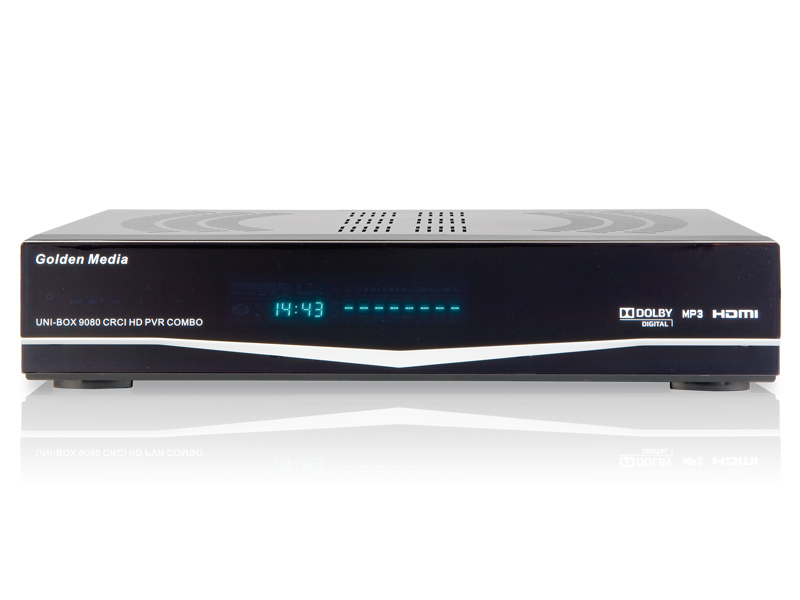TechRadar Verdict
Pros
- +
Some interesting features
- +
PVR-upgradable via USB
- +
Surprisingly powerful
- +
USB media player
Cons
- -
SD and HD outputs don't function properly simultaneously
- -
Unresponsive user interface
- -
No PID entry or editing
Why you can trust TechRadar
Those 'going digital' (or upgrading) are faced with a fundamental question – terrestrial or satellite? Like a handful of other receivers, the Golden Media Uni-box 9080 CRCI HD PVR Combo covers both.
The satellite part is compatible with both DVB-S and DVB-S2 signals, and can tune into standard and high-definition channels alike. Unfortunately, the terrestrial tuner is only conversant with DVB-T signals. In the UK this means the Uni-box will only receive standard-definition broadcasts.
A USB port allows the receiver to be converted into a basic PVR – and this is where those two tuners come in handy. Some varieties of multimedia content can also be fed into the unit via USB, while an Ethernet port provides some limited functionality.
The Uni-box is ready for pay-TV, courtesy of a dual Conax smart-card reader and a pair of CI slots.
Build and connectivity
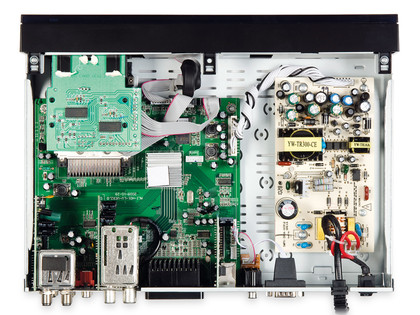
The midi-sized Uni-box looks classy and unpretentious. Dominating the front panel is a generously proportioned alpha-numeric fluorescent display that, among other things, shows the current time and channel.
The entire front panel, which is held shut with magnetic catches, hinges downwards to reveal a selection of buttons for menu access, volume/channel-change and standby. Many receiver features are thus accessible without recourse to the handset – which, in contrast to the receiver, is disappointing.
Some of its tiny and close-spaced buttons are labelled with hieroglyphics lacking any discernible function. With the drawbridge down, the conditional access hardware is also available. Sadly, there's no front panel USB port.
We noticed after a few days that the (fanless) Uni-box had a tendency to run rather warm, though our testing took place in summer.
On the rear panel is a decent range of connectivity. Ranged horizontally, and bunched rather closely together, are the inputs and loopthrough outputs of the satellite and DTT tuners.
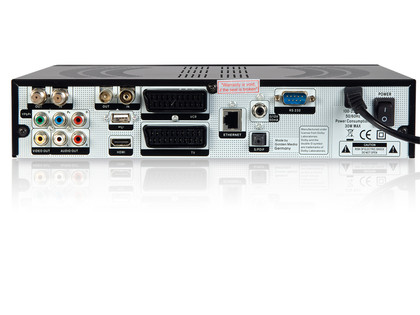
Under these is a sextet of phono sockets carrying component video, composite video and analogue stereo audio, plus a single USB port and HDMI 1.2 connector. There are also two Scart sockets (one of which is wired for RGB), a RS232 port for data transfer and an Ethernet terminal.
Finally, we have bitstream-capable coaxial/optical S/PDIF outputs and a mains switch that will take your standby power consumption down to zero watts.
Setup
All menus are arranged on a carousel. One of them is 'installation', within which you'll find submenus for conventional satellite/terrestrial installation, 'fast' satellite searching (specific to a number of non-UK providers) and 'auto-installation'.
The latter examines the dishes and switchboxes connected to the LNB input, and automatically determines the available satellites. We've seen nothing like it. Once the list has been built you can search each of the discovered satellites in turn.
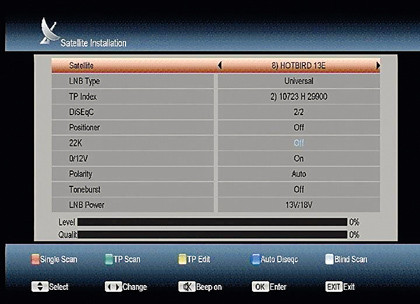
Also unique is the final item, 'satellite guide'. Enter your site latitude/longitude, plus the longitude of the desired satellite and the Uni-box will calculate the necessary elevation and azimuth angles.
The satellite installation menu is rather conventional. Choose a bird from the list of satellites and your LNB type. Unicable, single-band and universal types are all supported – there's also a user-definable alternative.
In the installation menu a DiSEqC switch position can be assigned; if you're using a motorised dish it can be set up from here. Both 1.2 and USALS types are catered for – the usual features (such as continuous/step movement, position recalculation/global shift and limit setting for DiSEqC 1.2) are all present.
The signal strength and quality bars indicate how well the currently selected transponder is being received. Single transponders or entire satellites can be scanned; TV and/or radio, plus free or all channels, can be specified beforehand. New transponders can also be added and existing ones edited.
The only available parameters are frequency, symbol rate and polarity. Disappointingly, entering or modifying PIDs is not allowed. Blind scan is available, although you cannot change the frequency step-size.
A 'service' main-menu option on the carousel covers channel organisation. Services can be moved, locked, deleted, renamed, skipped or added to one or more of no fewer than 32 favourites lists.
Other carousel items look after – among other things – languages, clock settings, default digital audio output mode, CAM matters, USB device formatting (FAT32 or NTFS), PVR configuration, network parameters, firmware upgrades via USB or Ethernet, aspect ratio and video output mode.
On which subject, RGB Scart and component (and, for that matter, RGB Scart and HDMI) cannot be active simultaneously.
Basic use
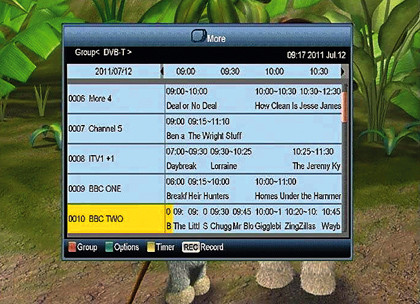
Although it's not even mentioned in the manual, pressing the 'F1' button displays all available satellites (among which you'll find 'terrestrial') for quick selection. A handy 'find' function is also available. Enter one or more letters of the desired channel's name, and all matches are displayed.
As is usual, pressing 'enter' calls up the main channel list. This can be sorted alphabetically, numerically, by transponder or according to encryption status; the 'find' function is available here too.
The yellow button accesses a 'property' submenu, which presents users with a quick and easy way of adding a channel to a favourites list. All other editing functions are available here too.
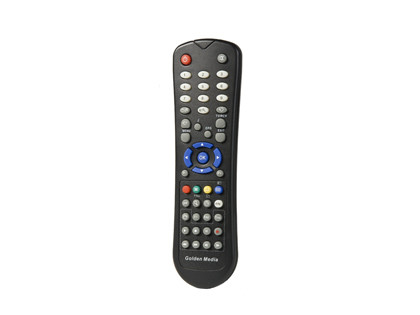
In normal use, the handset's 'fav' button cycles between 'all channels' and any active favourites lists. In normal use the 'info' button displays basic information about the current programme; pressing the red button treats you to technical information like signal strength/quality, encryption status, PIDs, satellite, frequency, polarity and symbol rate. There's supposedly a multi-channel 'mosaic' facility, although the relevant button of our sample's handset had no effect.
Even without USB storage, though, you can 'freeze' (and unfreeze) the picture with the 'pause' button – but nothing more.
A six-step picture zoom function, with panning, is also available. All of the 'usuals' are present – a dedicated button switches the unit from TV to radio mode. Decoding of conventional teletext (i.e. not the UK standard red button 'digital' variety) is possible, and if they're available you can choose from multiple soundtracks and subtitles.
We have no complaints about the EPG, which is compatible with now-and-next and seven-day schedules. By default, it displays the programmes currently being broadcast by up to five consecutive channels. A touch of a button replaces these with the 'next' programmes of the same schedules. Switch to 'more', and the EPG screen is replaced by a two-hour timeline-style display.
The final EPG mode details up to nine consecutive programmes from one (selectable) channel. It's easy to set the eight-event timer from the EPG.
PVR and multimedia
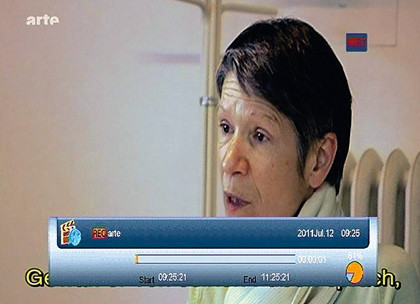
Although timeshifting and the recording of radio and TV programmes are possible with a high-capacity, solid-state USB device, an external hard drive is recommended for serious use. Thanks to the twin tuners, recording a satellite programme while viewing a terrestrial one (or vice versa) is permitted. You can even view one satellite channel while recording another, the proviso being that both must be carried by the same transponder.
In addition to making timed recordings you can manually invoke them – with a stop time if desired. Recordings are accessed from the 'file list', which has its own short-cut button. This is grouped with the 'transport' controls, which reside in the lower part of the handset.
The most basic of functions apart – renaming, locking and deleting recordings – no editing facilities are available. Timeshifting gives you the usual repertoire of trick playback functions. Its parameters, such as default buffer size, can be changed in the 'PVR Setting' menu – as can the nature of recording.
You're given a choice between recording an entire transponder and all its channels (a HDD is essential here), an MPEG file ('programme-stream' audio-and-video only, an option that's unavailable for HD channels), or the currently selected channel in transport-stream format.
In the latter mode multiple soundtracks, teletext and DVB subtitles are retained. The same is true of the 'transponder' recording mode, which is unique as far as we're aware.
We're very impressed with the multimedia player, which represents an alternative use of that USB port. Although billed as compatible with MP3, JPEG and BMP only, the Uni-box can handle far more than that. Among others, MKV/H.264 content (up to 1080p) and FLAC audio files can be played.
Less than intuitively, you have to manually select the type of USB content (video/software/MP3/image/ recordings) that you're after. There is an 'all (files)' option, but the default is MP3 (which actually covers a number of compatible formats). 'All' is more of a quick content browser – you can't select photos or video in this mode for full-screen playback.
It's a pity that the Uni-box cannot play networked multimedia files. Network features that are available include a weather forecast, RSS news feeds, basic FTP client and firmware updates (we couldn't get the latter to work).
Finally, we have a trio of games – Tetris, Othello and Snake.
Performance
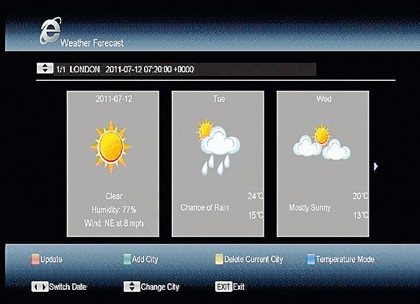
The Uni-box is let down by a sluggish user interface. It's far too easy to shoot past the desired menu option or channel. Switching between channels on the same satellite takes three seconds or so.
Search speeds are slower than usual. A full-channel search of Astra 1 was completed in five minutes. However, blind search is commendably fast. A blind search of Astra, which found two extra transponders, took just under seven minutes.
We had no problems with sensitivity, the Astra 1 and Hot Bird channels being reliably pulled in with a small dish.
Picture and sound quality impress too, the free-to-air HD channels on Astra 2/Eurobird conveying a definite 'Wow' factor via HDMI. Even the RGB Scart outlet yields vibrant colours and intricately rendered details by SD standards.
Tech Labs

Power consumption: Watts
Standby: 13W
Idle: 17W
In use: 18W
Search performance
Search 28E
FTA scan: 5 minutes 26 seconds
Full scan: 5 minutes 19 seconds
Blind search: 4 minutes 29 seconds
Search 19.2E
FTA scan: 4 minutes 45 seconds
Full scan: 4 minutes 42 seconds
Blind search: 6 minutes 53 seconds
Search 13E
FTA scan: 5 minutes 23 seconds
Full scan: 6 minutes 13 seconds
Blind search: 6 minutes 13 seconds
Verdict
For its modest asking price, the Golden Media Uni-box delivers some unique features. The ability to record an entire transponder is intriguing, while the automatic DiSEqC identification and satellite position calculator are practical installation tools.
Day-to-day channel selection, meanwhile, is eased via the handset's dedicated satellite-selection and 'find' buttons. In format support terms, the multimedia player is superior to that of many far more expensive receivers (and, for that matter, dedicated media players). AV performance is excellent, and the EPG has been well implemented.
Weighing against these pros are several cons. The handset is disappointing, and the user interface that it drives can be slow. The search facilities are too limited for dedicated enthusiasts.
Regular users will, however, find much to recommend the Uni-box.
Follow TechRadar Reviews on Twitter: http://twitter.com/techradarreview
